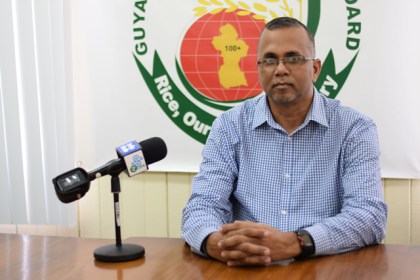The expected surpass in paddy production for the first quarter of 2018 can be credited to many factors, namely, good weather conditions, husbandry and management practices in the field, quality seed paddy, pests and disease control, drainage and irrigation, and notably efficient monitoring and communication between farmers and the Guyana Rice Development Board’s research and extension staff.
General Manager of the Guyana Rice Development Board (GRDB), Nizam Hassan noted that a key factor in the sizeable first production numbers was the fact that communication between farmers and the GRDB was well received, resulting in improved performance and results.
“Generally, we’ve found that the information and the capacity building that the GRBD’s research and extension staff has been engaged in over the years has been received positively by the farmers. The farmers themselves have been reporting excellent coordination and better results as we see manifested in our production.”
The General Manager also noted that the drainage and irrigation services along with good husbandry and management practices, and especially the control of pests and diseases, played an instrumental role.
Hassan said the pests and disease issue was managed because “they were able to effectively manage the pests and disease occurrences, in terms of the use of fertilizers the application rates in the use of chemicals. There was an appropriate use of these chemicals and the fertilizers.”
Hassan further stated that the Guyana Rice Development Board will continue to work towards refining the performance of the industry and improving the building capacities of farmers, so as to ensure that they adapt their production methodologies to remove deficiencies. This will be done by providing the farmers with the appropriate technologies, better quality seed, and advice on the appropriate use of chemicals and how to deal with pests and disease complexes that may occur.
According to a United States Department of Agriculture (USDA) Foreign Agricultural Service Commodity Intelligence Report (March 28, 2017), in previous years, farmers have been affected by a myriad of problems including drought, water rationing, saltwater intrusion, lack of crop rotation, less fertilizer input, and slower and lower returns to farmers. However, with 2018’s most recent reports of higher yields from farmer’s paddy cultivation; over 530,000 tonnes of paddy is projected to be produced – up nine percent from the 488,833 tonnes that were projected for the first crop of 2018. This year’s crop is expected to see an 11,333 tonnes paddy increase from last year’s 518,667 metric tonnes with the favourable conditions.






